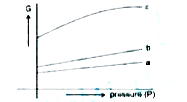Heat of formation of 2 moles of NH3(g) is−90kJl bond energies of H-H and N-H bonds are 435 kJ and 390kJmol−1 respectively. The value of the bond energy of N≡N is (1000−(x2+x+25)) kJ/mol What is x ?Solution in Telugu
Step by step video & image solution for Heat of formation of 2 moles of NH_(3)(g) " is" -90 kJl bond energies of H-H and N-H bonds are 435 kJ and 390 kJ mol^(-1) respectively. The value of the bond energy of N -= N is (1000- (x^(2) + x +25)) kJ/mol What is x ? by Chemistry experts to help you in doubts & scoring excellent marks in Class 12 exams.
Updated on:21/07/2023Topper's Solved these Questions
- CHEMICAL THERMODYNAMICSBOOK - AAKASH SERIESCHAPTER - CHEMICAL THERMODYNAMICSEXERCISE - Practice Sheet- Exercise-III
30 Videos
- CHEMICAL THERMODYNAMICSBOOK - AAKASH SERIESCHAPTER - CHEMICAL THERMODYNAMICSEXERCISE - Practice Sheet- Exercise-IV
20 Videos
- CHEMICAL THERMODYNAMICSBOOK - AAKASH SERIESCHAPTER - CHEMICAL THERMODYNAMICSEXERCISE - Practice Sheet-Exercise-I
33 Videos
- CHEMICAL KINETICSBOOK - AAKASH SERIESCHAPTER - CHEMICAL KINETICSEXERCISE - Objective Exercise - 4 (Assertion (A) & Reason (R) Type Questions)
44 Videos
- CHEMISTRY IN EVERY DAY LIFEBOOK - AAKASH SERIESCHAPTER - CHEMISTRY IN EVERY DAY LIFEEXERCISE - PRACTICE EXERCISE
29 Videos
Similar Questions
The following curve represents the variation of Gibbs function 'G' with pressure at constant temperature. Correct match of given plots with the physical state of a substance is

View SolutionFor a perfectly crystalline solid Cp.m=aT3, where a is constant. If Cp.m is 0.42 J/K − mol at 10K, molar entropy at 10K is
View SolutionWhich of the following diagram correctly represents the variation of internal energy (U) of gas under expansion at constant temperature.
View Solution(A) Spontaneous reaction may be slow or fast.
(R ) Spontaneous nature deals with feasibility of the reaction but not rate.
View SolutionAnti allergy drugs are
View SolutionHeat of formation of 2mol of NH3(g) is =90kJ, bond energies of H−H and N−H bonds are 435kJ and 390kJmol−1, respectively. The value of the bond enegry of N≡N will be
View SolutionGiven that the food energies of :N≡N is 946kJ mol−1 , H-H is 435 kJ mol−1,N−N is 159 kJ mol−1, and N-H is 389 kJ mol−1 , the heat of formation of hydrazine in the phase in kJ mol−1 is :
View SolutionBond energies of H−HandCl−Cl are 430 kJ mol−1 and 242 kJ mol−1 respectively. ΔHf for HCl is 91 kJ mol−1.
What will be the bond energy of H−Cl?
View SolutionEnthalpy of formation of NH3 is -X kJ and ΔHH−H, ΔHN−H are respectively Y kJmol−1 and Z kjmol−1. The value of ΔHN=Nis
View SolutionH - H एवं Cl - Cl की बंध ऊर्जाएँ क्रमश: 430 kJ mol−1 एवं 242 kJ mol−1 हैं। HCl के लिए ΔHf, 91 kJ mol−1 है, तो H-Cl की बंध ऊर्जा क्या होगी?
View SolutionHeat of formation of 2 moles of NH3(g) is−90kJl bond energies of H-H and N-H bonds are 435 kJ and 390kJmol−1 respectively. The value of the bond energy of N≡N is (1000−(x2+x+25)) kJ/mol What is x ?
View SolutionBond energies of H−HandCl−Cl are 430 kJ mol−1 and 242 kJ mol−1 respectively. ΔHf for HCl is 91 kJ mol−1.
What will be the bond energy of H−Cl?
View SolutionThe H-H bond energy is 430 kJ mol−1 and Cl-Cl bond energy is 240 kJmol−1. △H for HCl is -90 kJ. The H-Cl bond energy is about:
View SolutionThe bond energies of H - H and I - I bonds are 435 kJ mol^-1 and 150 kJ mol^-1 respectively. If DeltaH_f^o for HI is 26.5 kJ mol^-1 then bond enthalpy of H-I bond is
View SolutionThe bond energies of H-H and l - I bonds are 435 kJ mol−1 and 150kJmol−1 respectively. If δHOt for Hl is 26.5 kJ mol−1 then bond enthalpy of H−l bond is
View Solution
